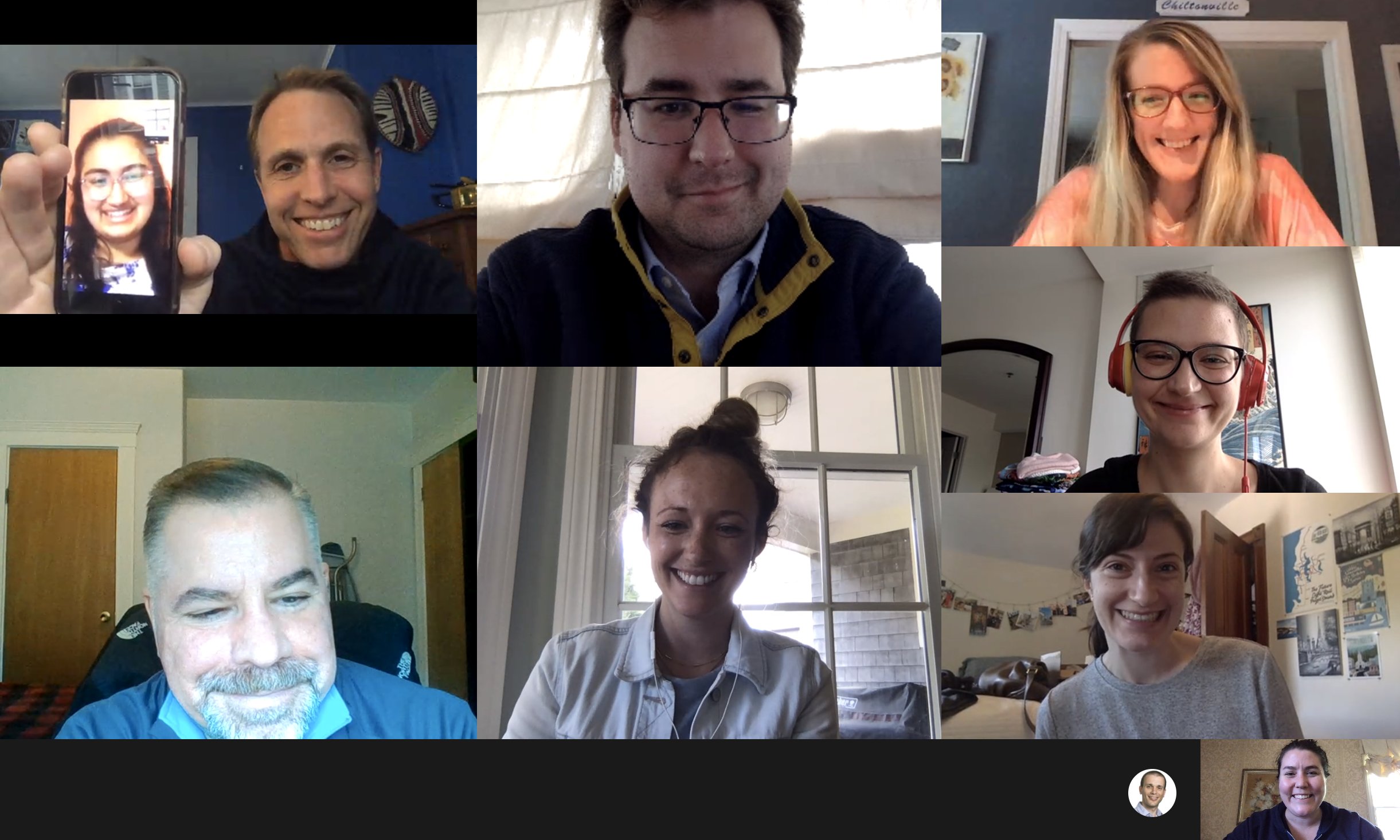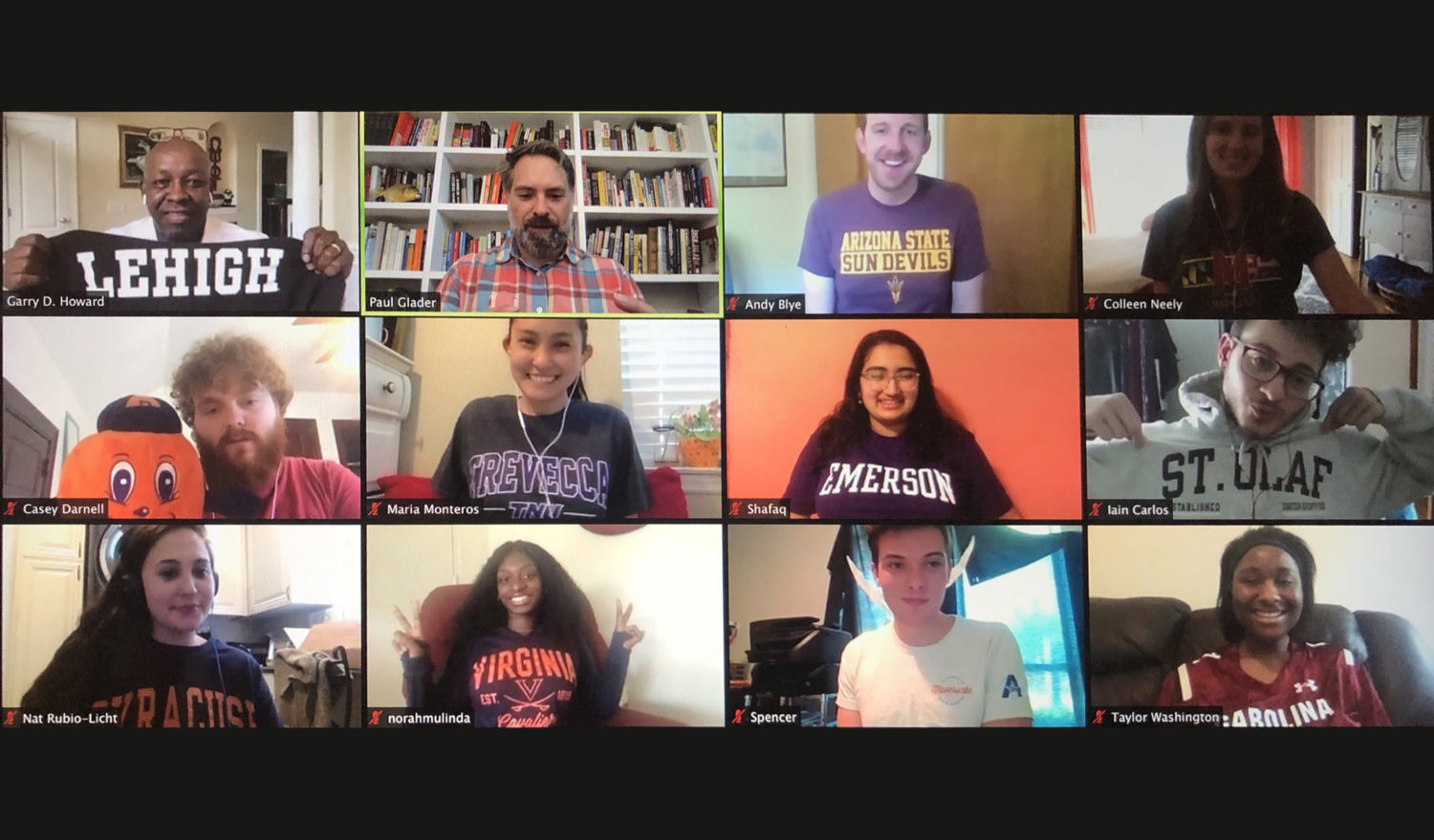Two weeks into my remote summer internship, crammed into a home with my family of four, all of us contracted COVID-19. Like other struggling student journalists, I’d been trying my best to succeed at my internship despite my slow computer and having my entire life upended by the pandemic.
When personal issues cropped up during past internships, I tried my best to conceal them. We are taught to be professional — not too personal — on the job. But when your home’s on display in Zoom calls, even clearance-tag professional clothes and eagerness can’t hide stark disparities.
I was privileged enough to be able to accept a temporary job, as were the rest of the people I spoke to for this story. We benefited not just from the opportunity, but in some cases were even given additional financial assistance from the Dow Jones News Fund for things ranging from technology upgrades to rent. My hope in writing this is to spell out the realities faced by us interns so that hiring managers and newsrooms beyond the DJNF will understand the vastness of the disparity, and consider our stories as they hopefully continue to hire people of diverse backgrounds to create more equity. This year’s remote internships exposed the extent of the digital divide among student journalists and how newsrooms can help level the playing field.
Stark realities

The author in a virtual meeting with the Boston Business Journal (Courtesy: Catherine Carlock)
I was fortunate to land an internship over the summer through the Dow Jones News Fund. I reported for the Boston Business Journal from my bed in Houston with two pillows stacked up as my desk. Like many people of color and of lower income, I have a “make it work” mentality. When an editor asked me to write a quick article, I wasn’t going to make excuses. My laptop malfunctioned, so I jumped on my mom’s work computer to write it. When the house was too loud, I conducted interviews in my closet or bathroom. When a storm knocked out our power, I joined a video conference with lights off and hotspot on.
Even while writing and conducting interviews for this story, I felt like I was whining because I was privileged enough to have a home in a city with access to decent Wi-Fi. I am an able, lower-middle-class immigrant woman with a college degree, but despite my privileges and a considerate newsroom, I struggled this summer. America is filled with people with less access than me.
Technical problems
I took about two weeks off when I was sick and slowly recovering from COVID-19 while also caring for my mom, dad and sister. I felt incredibly behind, and I wanted to perform at my best for the remainder of the summer. At that point, I was already juggling so much that I needed at least my technology to work.
I decided to ask the Dow Jones News Fund to help me purchase a new computer after remembering Linda Shockley, DJNF managing director, said there was a new Internship Assistance Fund. To my surprise, DJNF bought a laptop for me to keep even after the summer. It showed me how much the Fund cared about my success as a journalist beyond just the summer program.
Fundraising for the Internship Assistance Fund reached $20,000 by early June, bolstered by an initial contribution of $10,000 in 2019. DJNF spent nearly $14,000 on 13 requests, 10 of which were for technology. The money bought laptops, internet access and groceries, and paid rent. Because DJNF announced this aid, interns felt more comfortable asking for assistance.
Erin Schulte Collier, president of the Good Words Foundation and a former DJNF intern in the midwest, began the Internship Assistance Fund after hearing stories about interns who struggled financially. She wanted to ensure students with limited means could accept internships that might launch their careers and make the industry more diverse.
Norah Mulinda, a DJNF intern at the Washington (D.C.) Business Journal, encouraged me to apply to the fund after she received money to buy better web access. Her home in Roanoke, Virginia, sits atop a hill without internet access, so she and her two sisters would go to their grandmother’s one-bedroom apartment to work. They had done this since the pandemic started, but stopped for fear their grandmother would get sick. Mulinda used her personal hotspot at home, but it quickly ran out. Pre-pandemic, she often went to the library and local cafes for Wi-Fi.
Iain Carlos, a Chicago-based reporter for the Minneapolis/St. Paul Business Journal, struggled with his internet connection and computer during pre-internship training. His Wi-Fi glitched and he could barely be heard at times. Our boss urged him to apply for assistance, especially since he was covering the aftermath of social unrest in the city where George Floyd was killed.
He once had a story with a quick turnaround when his internet wasn’t working upstairs, so he ran downstairs where the TV was loud and then back upstairs to use USB tethering to get a connection, he said.
“I got the story done but I thought to myself, ‘Dang, if I can write a story with bandwidth this bad, imagine how great of a reporter I would be with good bandwidth,’” Carlos said.
‘I never felt like I was doing my best’
Mariya Parkhomchuk’s laptop screen quit working on the second day of training for her digital media internship program. Though her original internship fell through, undaunted, she connected her computer to a TV with an HDMI cable before submitting her request for help through the fund.
Both Carlos and Parkhomchuk received laptops. Carlos also got help to upgrade his internet connection.
Megan Menchaca, a spring audience engagement intern at The Texas Tribune, went home mid-semester when the University of Texas at Austin campus closed. The bedroom in her house was occupied, so she slept on the floor in her parents’ home office before moving to a makeshift room in the dining area. On top of that, her laptop quit working at a time when she had to engage on social media with breaking news every hour. She used her parents’ old computer until she could get hers fixed.
“There were all of these different things that were chaotic that made it difficult to sleep and be a good employee,” Menchaca said. “People at The Texas Tribune were all great and very understanding, but I never felt like I was doing my best.”
She continued working and sleeping in the dining room during her summer internship at The Dallas Morning News.
Mili Mansaray, a DJNF intern at The Beacon covering Kansas City, is the eldest daughter at home. She had to help four siblings and her mother while interning, making it hard to focus. Since money was tight, the income from her internship and money from her assistance fund helped buy groceries for the entire family.
“My parents are from West Africa, and my home culture is really different than I think what is expected of Americans as a whole with boundaries. People just come in whenever they feel like or my mom expects me to do something to help her out,” Mansaray said. “I was just stressed out about a lot of things besides my internship that made it really distracting — like feeding my family and driving around my siblings.”
Hundreds of hurdles
Receiving a laptop and getting paid for my internship resolved some of my issues but not all. I still had to clear what felt like hundreds of hurdles — worrying about money since my dad was unemployed and sharing workspaces with minimal family boundaries. The laptop put me on slightly more level footing but I also worked hard and overtime.
Newsrooms across the nation adapted differently and learned from their remote time. The New York Times, The Wall Street Journal, and Arizona Republic anticipated the potential technical difficulties and sent laptops to the interns and fellows for the duration of their programs. The Times also gave small stipends for other work-from-home needs like a desk or chair, according to Theodore Kim, director of newsroom fellowships and internships. The Journal stepped up its mentorship program so journalists could offer career advice and advocate for interns, if necessary, said Andrés Rafael Martínez, senior editor of newsroom internships. However, many publications left interns to work things out by themselves.
I reported on a study last summer that showed how major news outlets select interns from mostly elite universities. Landing a paid internship comes with enough barriers and silos. But even with a paid internship, people from diverse backgrounds — immigrants, low-income students, people of color, residents of rural towns — have a disadvantage.
Californian Josh Cozine, a 2019 intern at Richmond Bizsense in Virginia, used a borrowed car and lived in three different places during his three-month internship. For two months, he slept on a cot. Except for three weeks of the summer, he spent lunch time and restroom breaks on his phone looking for a place to stay.
He said, “I’ve been on disability for most of my life. There was never any chance to save money at all.”
‘We’re here for you’
Richard Jones, director of The John W. Gallivan Program in Journalism, Ethics, and Democracy at the University of Notre Dame, said that it’s hard enough to get into journalism. Many working-class and people of color couldn’t even break in because of financial barriers and family obligations.
“We risk losing a generation of students, not because they don’t have talent or interest or ability, but just because the finances don’t add up. So I think as much as we possibly can, we want to make sure we can level the playing field financially,” Jones said. “I think it’s important that we support student journalists of color and student journalists who come from low-income, first-gen backgrounds to let them know, ‘Your voice is essential. You are needed in these rooms.’ ”
Just during the pandemic, 8 million people have slipped into poverty. The Federal Communications Commission found that more than 21 million Americans lack broadband access. Media companies need to step up efforts to hire immigrants, Black, indigenous and other people of color because these journalists understand the tough issues Americans face. Hiring reporters and editors from marginalized communities strengthens media with perspectives that don’t perpetuate stereotypes or choke authentic voices.
Publications that sent their interns laptops and other technology took care of one need for students, and that is a step. But aside from providing devices so interns can be more productive, internship programs need to consider the backgrounds and financial challenges of their temporary hires, and offer training and mentoring to help advance their careers.
Parkhomchuk, who interned for the Office of National Marine Sanctuaries, described what receiving the computer meant to her.
“It wasn’t the fact that they just bought me a laptop. It was more about the fact that they said, ‘Hey, we’re here for you. You are not defined by your technological limitations, we’re not about to cut you off just because this thing, unfortunately, happened to you. We’re going to continue to build you up,’” she said.
I don’t know what internships will look like in upcoming internship seasons, but whether or not newsrooms are remote, publications have to extend grace to early-career journalists. We’ve learned people have different levels of access; technology glitches and unfortunate accidents happen. These situations existed before COVID-19, and they will continue to exist. We can’t hide personal and inequity issues, especially since they can become barriers.
Interns like me can and will work hard. But internship programs need to ensure they are creating spaces and providing resources that enable us to thrive.






